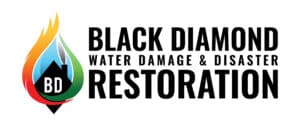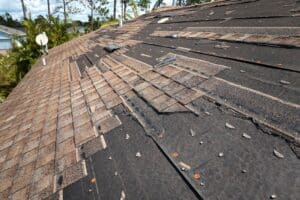Winter presents unique challenges for homeowners, particularly in preventing leaks that cause significant water damage. As temperatures plummet, the risk of water damage from leaks increases, underscoring the importance of preparing your home in advance.
Frozen pipes are a common winter problem; water inside pipes freezes and expands, causing pipes to burst and potentially flood your home. Ice dams are another major concern. These occur when melted snow on a warm attic refreezes at the roof’s edge, blocking proper drainage and pushing water back under roof tiles and into your home.
By taking proactive steps to insulate and safeguard your home’s plumbing and roof, you greatly reduce the risk of winter leaks. This section will guide you through specific preventative measures and maintenance tips to keep your home dry and secure during the cold months.
Understanding the risks
Winter poses several risks to your home, from frozen pipes to ice dams and heavy snow accumulation on roofs. Understanding and addressing these hazards is crucial for safeguarding your property.
Frozen pipes
Pipes often freeze and burst due to a drop in temperature, which causes the water inside to expand and turn to ice. This expansion increases pressure inside the pipe, leading to cracks or bursts and subsequent water damage. Areas at risk include external walls and unheated spaces like attics, garages, and basements.
Ice dams
Ice dams occur when heat from a warm attic melts snow on the roof, which refreezes at the colder eaves, forming a ridge of ice. This ice dam traps water behind it, which seeps under roof shingles and into your home, damaging the roof and interior.
Snow accumulation
Heavy snow accumulation, especially on flat or shallow-pitched roofs, strains the roof’s structural stability. As snow melts and refreezes, it also contributes to the formation of ice dams or exploits vulnerabilities in the roof, leading to leaks. Removing excessive snow and ensuring proper attic insulation and ventilation are effective preventative measures.

Preventative measures
Taking proactive steps to safeguard your home against winter leaks is crucial. Here’s how to effectively insulate pipes, enhance roof insulation, and seal windows and doors.
Insulating pipes
Insulate pipes in vulnerable areas like basements and attics using foam rubber or fiberglass sleeves. Focus on pipes in unheated or exterior wall spaces. For added protection during extreme cold, you might use electric heating tape, but always follow the manufacturer’s safety instructions.
Enhancing roof insulation
Proper attic insulation and ventilation are essential to prevent ice dams. Ensure your attic has adequate insulation to minimize heat escaping through the roof, which can melt snow and form ice dams. Keep roof ventilation clear to maintain an even roof temperature, and add insulation if current levels are inadequate.
Sealing windows and doors
Check and seal leaks around windows and doors to keep out cold air and moisture. Feel for drafts and inspect caulking and weatherstripping for gaps or damage. Replace any compromised materials and consider adding shrink film to windows for extra insulation. These steps will not only prevent leaks but also enhance your home’s energy efficiency.
Regular maintenance checks
Regular maintenance is essential to protect your home from winter leaks. Here’s how to conduct vital checks on your gutters and downspouts, roof, and identify early signs of leaks.
Gutters and downspouts
Clean your gutters and downspouts regularly to prevent ice dams and water overflow. Before winter and after major storms, clear out leaves, twigs, and debris to ensure smooth water flow. Check that all components are securely attached and undamaged. Consider installing gutter guards to reduce debris accumulation.
Roof inspections
Inspect your roof for potential weaknesses before winter sets in and after severe weather. Look for missing, damaged, or worn shingles, especially around vents, chimneys, and other penetrations. Ensure all flashing is intact and securely in place to prevent leaks.
Detecting early signs of leaks
Early detection prevents extensive damage. Inside your home, watch for discolored spots on ceilings or walls, peeling paint, or swelling, which may indicate leaks. In the attic, check for damp insulation or rafters. Also, be mindful of musty odors that could signal hidden mold from moisture issues.
Emergency preparedness
Being ready for emergencies like a burst pipe is crucial during winter. Here’s how to handle a burst pipe and what tools and supplies you should have on hand for quick leak repairs.
What to do if a pipe bursts
Act quickly if a pipe bursts to minimize water damage. Immediately shut off the main water supply and then open the faucets connected to the burst pipe to relieve pressure and help drain the water. If the burst is near electrical lines or outlets, switch off the electricity at your breaker box to prevent hazards.
Contact a plumber promptly for repairs, and if water damage is extensive, consider hiring a professional water damage restoration service.
Tools and supplies
Prepare for minor leaks by having these essential tools and supplies easily accessible:
- Pipe insulation and heating tape to prevent freezing.
- Wrenches and pliers for various repairs.
- A pipe cutter to remove damaged pipe sections.
- Slip joint pliers and adjustable wrenches for adjusting fittings.
- Epoxy putty or pipe sealing tape for temporary leak sealing.
- A wet-dry vacuum to clean up water spills.
- Buckets and towels are used to catch drips and clean up.
- A flashlight for inspecting dim areas.
- A water leak detector will alert you to leaks early.
By preparing for emergencies and stocking the right tools, you can quickly manage and repair leaks, reducing potential damage to your home during the winter months.
Professional help
While DIY repairs are suitable for minor issues, certain situations require professional expertise. Knowing when to call in experts and how to choose the right contractor is crucial for effective and lasting repairs.
When to call a professional
Seek professional help for complex issues beyond basic DIY skills, such as extensive water damage from a burst pipe, recurring leaks, or unclear sources of water intrusion. Professionals have the necessary tools, experience, and knowledge to accurately diagnose and resolve problems.
Choosing the right contractor
To find a reliable contractor for winter leak repairs and preventative maintenance, start by gathering recommendations from friends, family, or online reviews. Verify the contractor’s credentials, including licensing, insurance, and certifications.
Obtain multiple quotes to compare services and prices, but remember that the least expensive option may not always offer the best quality. Ask contractors about their experience with winter-related issues and request references from similar past projects.
You can bet on Black Diamond!
While the tips and strategies outlined in this blog enhance your home’s resilience against winter damages, some situations require professional intervention. For expert assistance, contact Black Diamond Water Damage & Disaster Restoration.
Our team of professionals is well-equipped to handle any repair or preventive maintenance you might need. Trust Black Diamond to help keep your home dry and safe throughout the cold months, ensuring peace of mind and lasting protection.
daftar situs gacor situs slot slot online situs slot togel resmi situs toto situs slot situs toto rtp slot toto slot monperatoto slot gacor kampungbet keluaran hk https://idisurabaya.org/ situs slot toto slot slot gacor kampungbet data macau rtp slot situs toto kampungbet kampungbet situs hk bento4d toto slot slot terpercaya toto slot toto slot toto slot toto slot slot gacor toto slot toto slot link slot gacor situs slot gacor situs toto toto slot toto togel bento4d






